 |
|
|
 |
|
|
From "A Hornbook of Virginia History," published by the Virginia State Library in 1965:York County was originally named Charles River, and was one of the eight shires formed in 1634. The present name was given in 1643, probably in honor of James, Duke of York, the second son of Charles I. Its area is 123 square miles, and the county seat is Yorktown.New Kent County was probably named for the English county Kent. Colonel William Claiborne, a native of Kent, was a prominent resident of the Virginia county at the time of its formation. New Kent County was formed from York about 1654. Its area is 221 square miles, and its county seat is New Kent.Hanover County was named for King George I, who, at the time of his accession to the English throne, was Elector of Hanover, Germany. The county was formed from New Kent in 1721. Its area is 466 square miles, and the county seat is Hanover.Louisa County, named for Princess Louisa, a daughter of King George II, was formed from Hanover in 1742. Its area is 514 square miles, and the county seat is Louisa. |
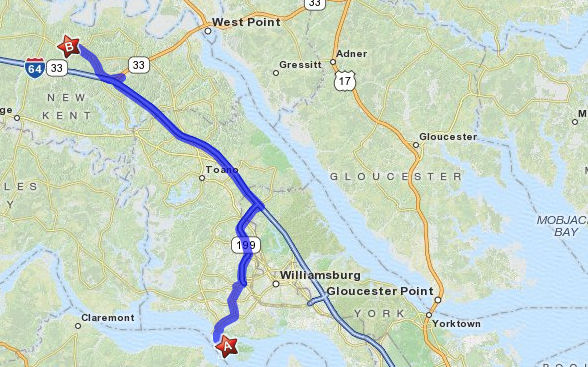

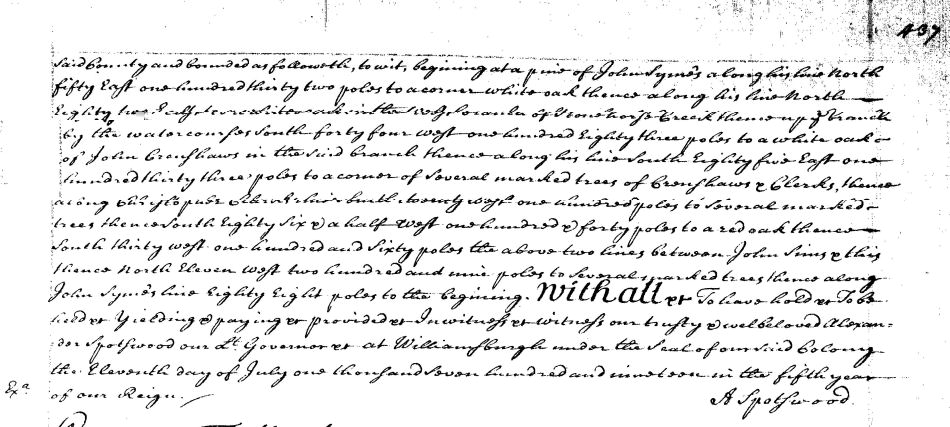
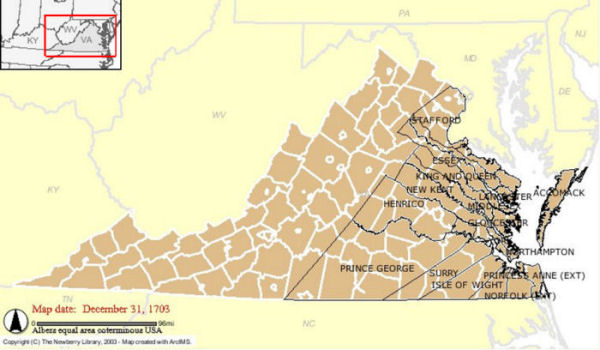 |
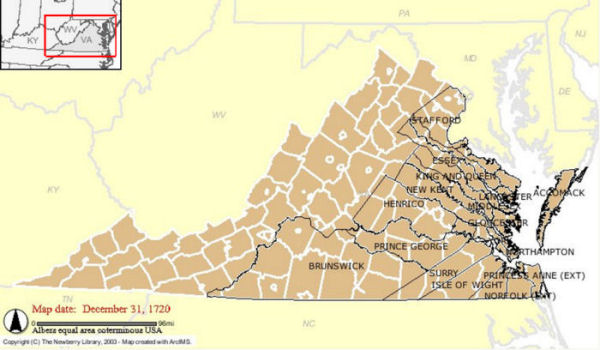 |
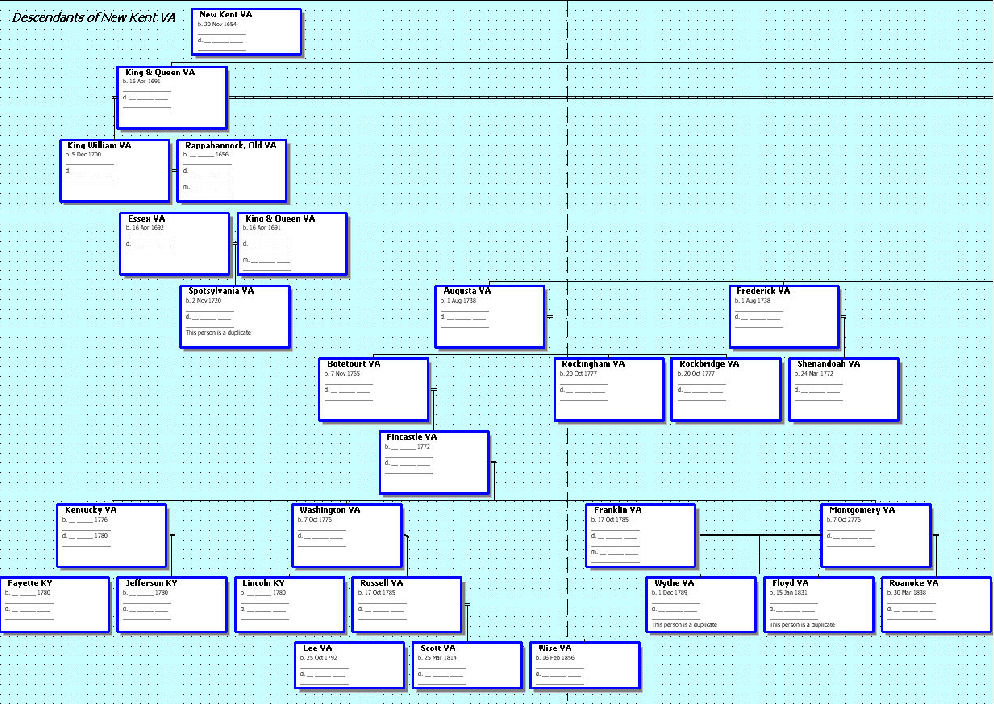
1. On 25 May 1734, George Brock of Hanover Co., VA, patented 400 acres on both sides Corn Swamp, adjoining the lines of Harding Burnley Jr., John Aylett, and others (Patent Book 13, p. 212).2. On 1 Aug 1734, George patented another 400 acres adjoining Syms' and Harding Burnley’s lines (Book 13, p. 244).3. Also on 1 Aug 1734, George Brack patented 400 acres adjoining the lines of Col. John Syme decd., and said Brack (Book 13, p. 244).4. On 1 Aug 1734, George Brack/Brock of Hanover Co., VA, patented 400 acres adjoining the lines of Col. Richard Yarbrough Jr., John Poindexter, and Col. John Syme (Patent Book 13, p. 245).
|
On 12 Jul 1742 GEORGE BROCK of St. James Par., Goochland Co., purchased land for £7 from James Owens of St. James Par. containing 162½ acres on the east branches of the Wilde Boar Creek, bounded by Charles Christian, and having beginning boundaries within the Hanover Co. line. |
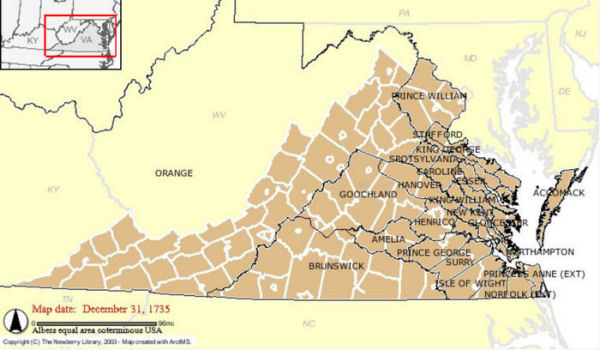 |
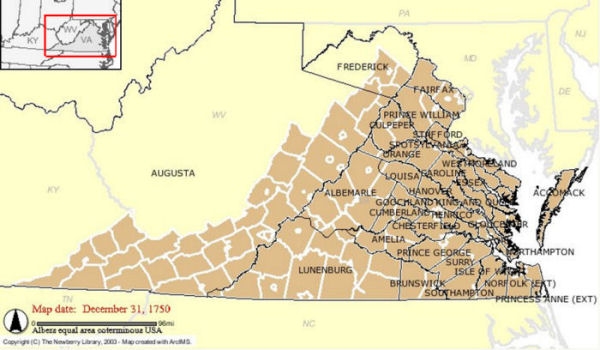 |
George Brack of St. Pauls Par., Hanover Co., to Champness
Terry of St. Martins Par.; Lease and Release; £30 currt.
money; 150 ac. and plantation in St. Martins Par. beginning at
oak in Mountain Track in Capt. William Flemings line.... near
the main branch of Sedgey Creek.... Mrs. Barbara Winstons corner....
part of a greater Tract granted to the sd. George Brack by Deed
in Hanover Co. Court on the (blank) day of (blank) 17 (blank).
|
Hanover Co., VA, Court Records 1733-1735 Deeds, Willis, Inventories; p. 96-98 Indenture. 5 July 1734 |
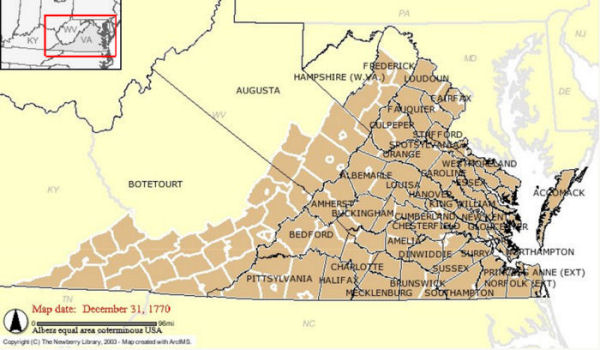 |
 |
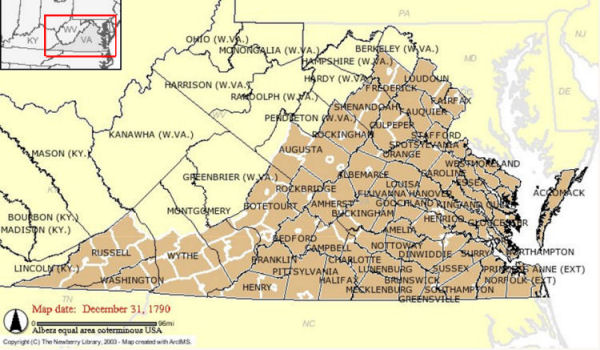 |
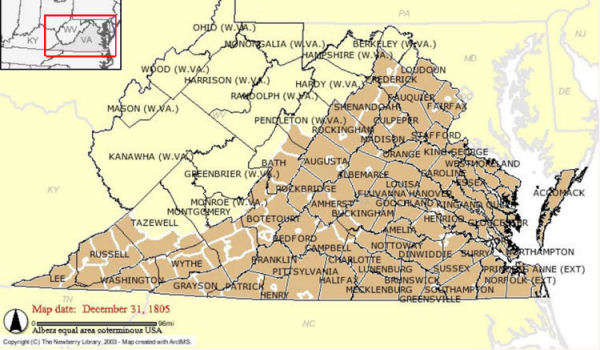 |
On the 1746 and 1748 tithe lists, a George Brock was in St. James Southam Par., Albemarle Co. (the portion that is now Powhatan Co.), VA, with two other tithes; we know this wasn't George Sr. because he was in St. James Parish. This was probably George Brock, Jr., and his oldest sons. Males living at home were 16-21 before they were listed separately in their own names, so the two other tithes were born 1725-1730, George Jr's sons George b. 1726 and John b. bet 1725-30. |
In 1749 the Southam Par. portion of Goochland Co., VA, became Cumberland Co. -- where Jesse Brock was born 8 Dec 1751, as sworn in his Revolutionary Pension application. He settled Harlan Co., KY, in late 1700s and died there 3 Oct 1843. His sister Mahala Susanna Brock (who married Edward "Ned" Callahan) was born in Cumberland Co. too, 1749. |
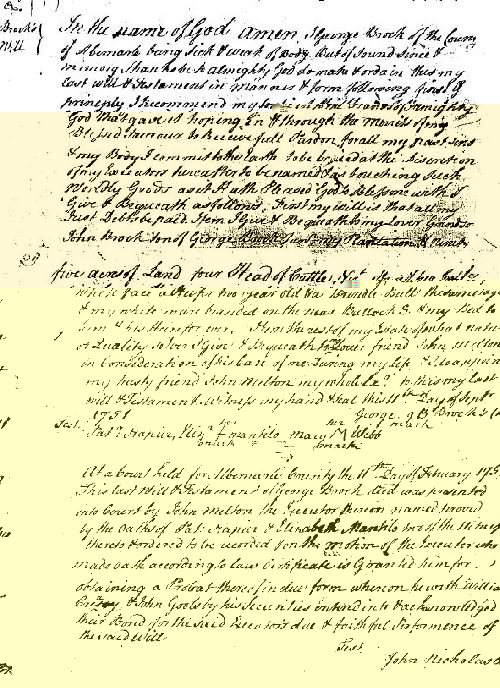 |
'In the name of God
amen, I GEORGE BROCK of the County of Albemarle, being sick and
weak of body but of sound mind and memory thanks to Almighty
God do make & ordain this my last will and Testament in manner
and form following . . . FIRST I recommend my Soul unto Almighty
God that gave it hoping through the merits of my Blessed Savior
to Receive full Pardon for all my past sins & my body I commit
to the Earth to be buried at the discretion of my Executors hereafter
to be named & as touching such worldly goods as it hath pleased
God to bless me with I give & bequeath as follows:
|
|
|
On 8 Dec 1761, John Brock of St. Ann's Parish of Albemarle sold to George Brock of the same . . . for £20 his 95 ac in Albemarle on both sides of Great Bremo Creek beginning at John Paine's corner to Joseph Walton's line.
|
|
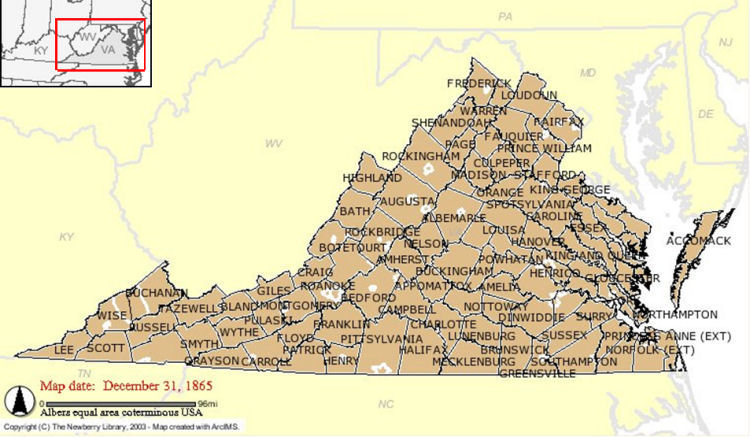 |
|



